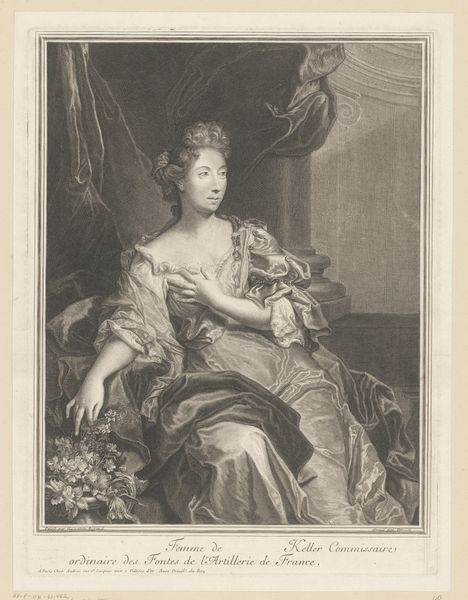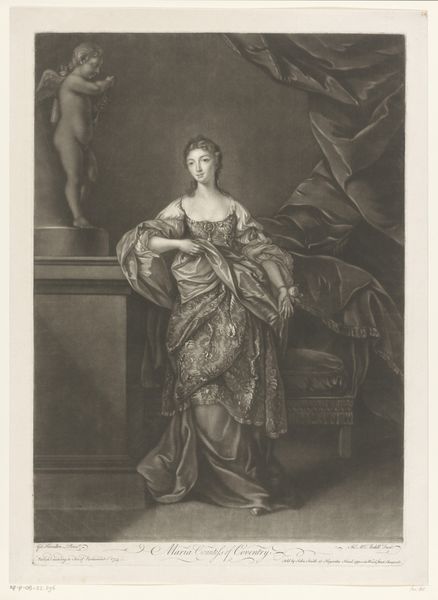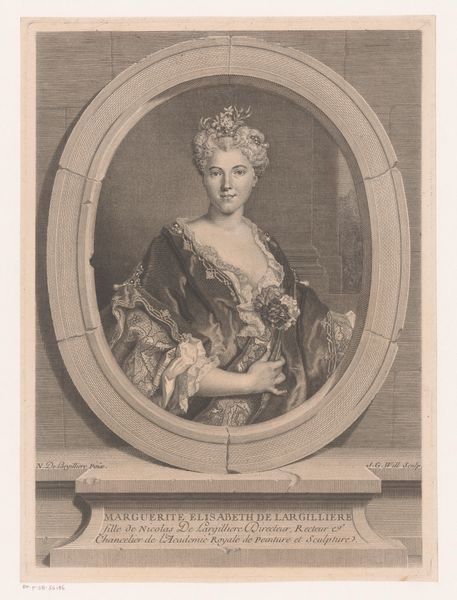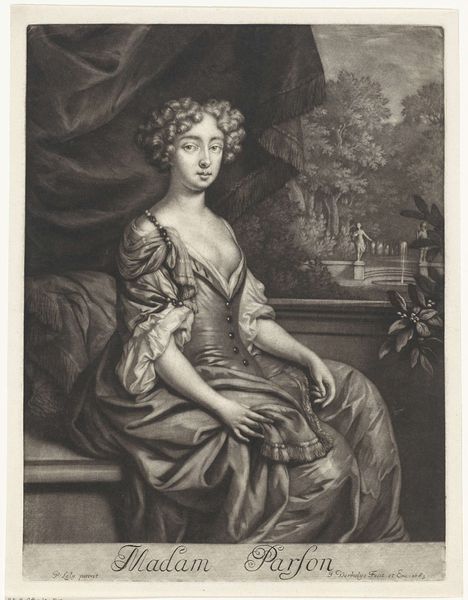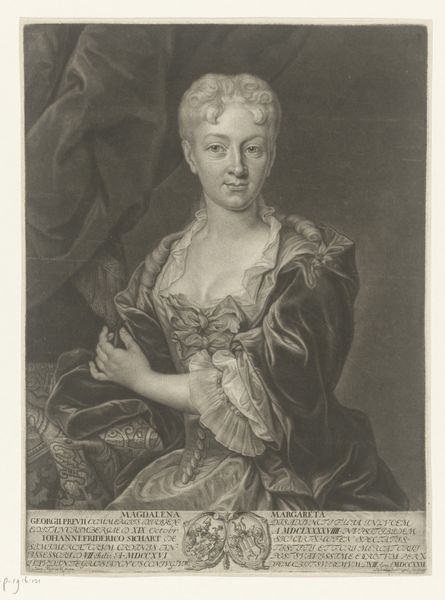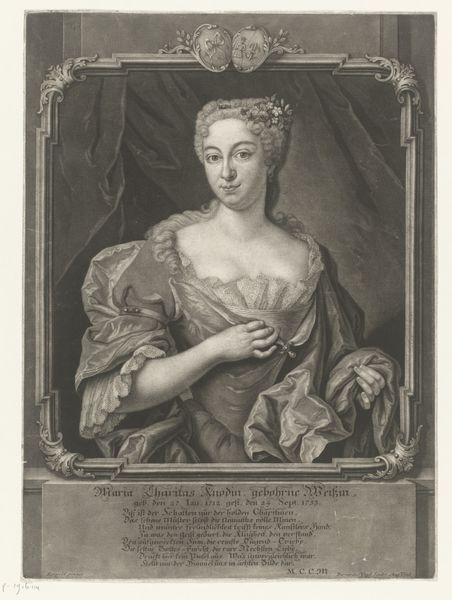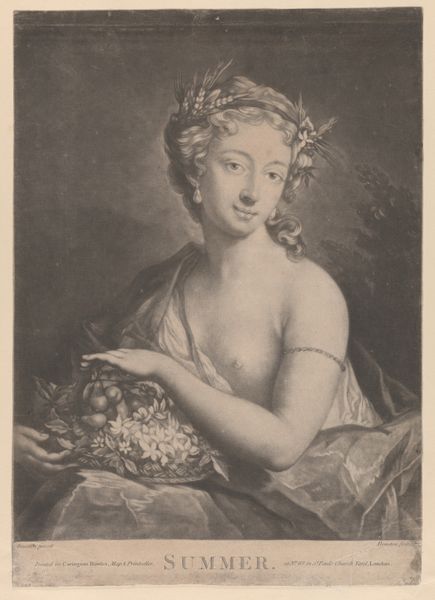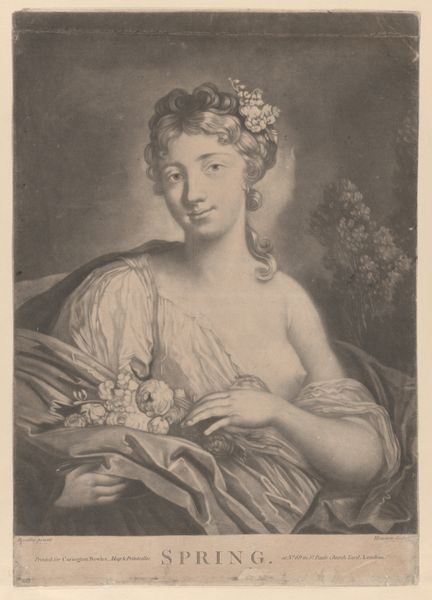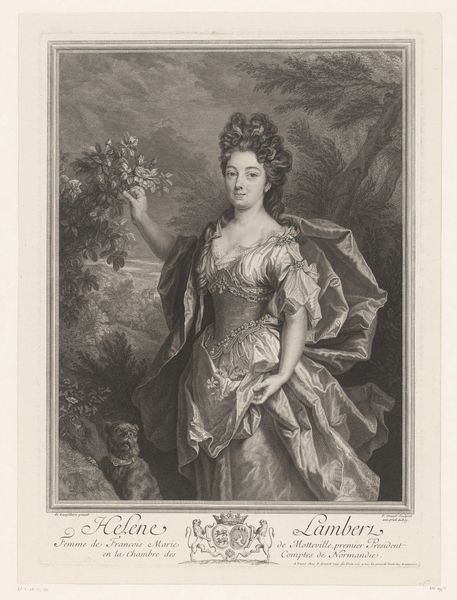
engraving
#
portrait
#
flower
#
figuration
#
engraving
#
rococo
Dimensions: height 411 mm, width 292 mm
Copyright: Rijks Museum: Open Domain
Curator: Standing here at the Rijksmuseum, we have in front of us a fascinating engraving by Jean Daullé, made sometime between 1735 and 1736. It’s titled "Portret van Marie Pélissier met bloemenkrans," or "Portrait of Marie Pélissier with a Wreath of Flowers." Editor: My first impression is one of serene formality. The light and shadow, though subtly rendered in the engraving, suggest a controlled elegance. Her pose, the flowers—it all speaks to a constructed presentation of status. Curator: Precisely. Daullé was a master engraver, and this piece demonstrates his exceptional skill in translating paint into print. Consider the original painting, most likely commissioned; this engraving then served to disseminate her image, crafting a persona for public consumption through reproductive means. It speaks volumes about celebrity culture in 18th-century France and the economic drivers behind portraiture. Editor: But look at the lines themselves! The delicate cross-hatching, the way Daullé varies the pressure to create subtle gradations of tone – it’s all meticulously planned to achieve an effect of luminous realism. The wreath almost becomes a halo. It's fascinating how he uses purely graphic means to create texture and depth, really quite virtuosic. Curator: Absolutely, and consider Marie Pélissier herself, a star of the Parisian stage. The wreath of flowers isn't merely decorative; it links her to classical allegories, elevating her status as a performer and as a woman. This imagery serves as a means to legitimize and celebrate her profession during an era of evolving social roles. Editor: Perhaps, but the sheer perfection of the line-work suggests an almost Platonic ideal, removed from the daily grind of the theatre. It captures the very essence of Rococo—artifice and delight. There is even an inscription! Curator: And how did the labour in Pélissier’s profession help challenge tradition boundaries between high art and craft? What role does labour play here, what economic forces at the Paris Opera, that is, that supported not only her career but the cultural demand for such prints? Editor: Well, however you read it, what endures is a poised image rendered with captivating graphic precision! Curator: I agree. Reflecting on the processes behind its making certainly gives us a clearer understanding of the interplay between art, labor and commerce in 18th century France.
Comments
No comments
Be the first to comment and join the conversation on the ultimate creative platform.
